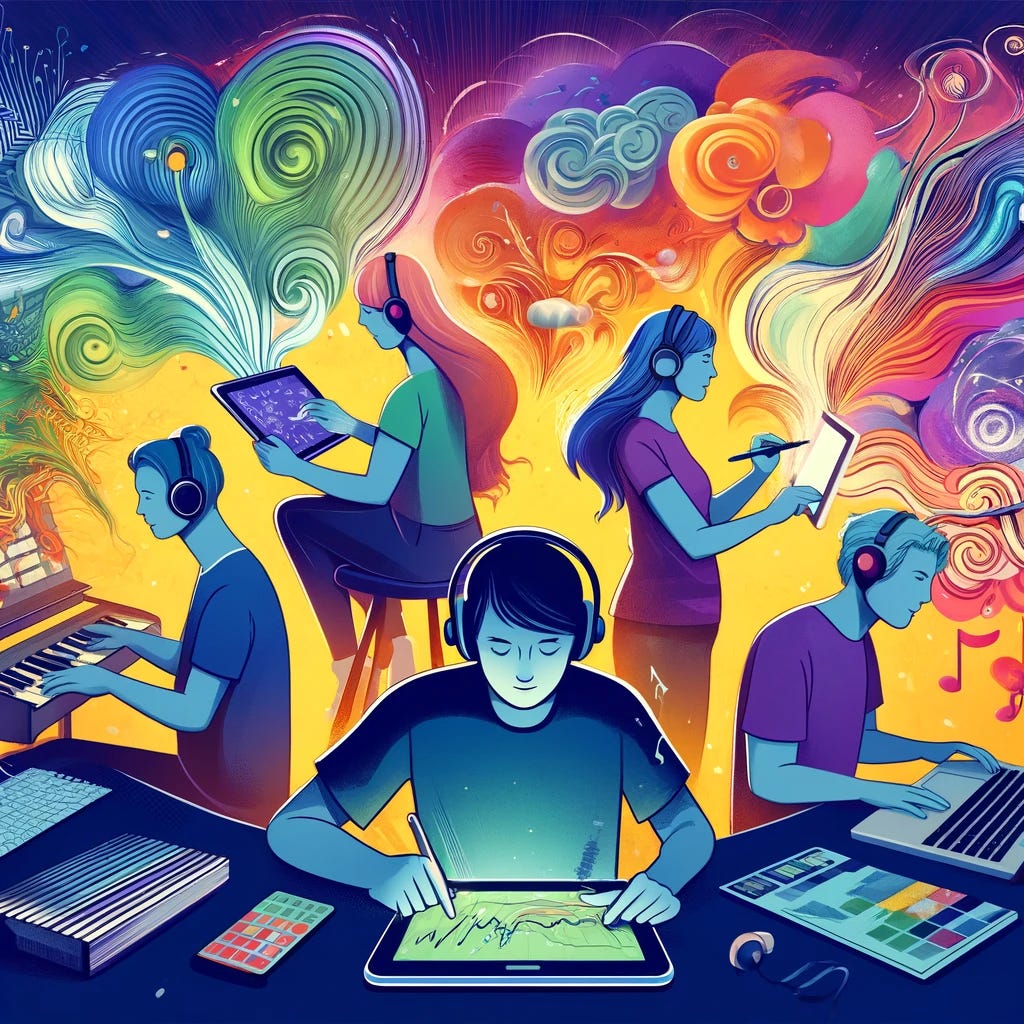The Role of Technology in Enhancing Creative Expression for Neurodivergent Individuals
In the digital age, technology plays a pivotal role in facilitating and enhancing creative expression, particularly for neurodivergent individuals who may experience the world in unique and profound ways. This blog post explores how various technological tools and software are tailored to support the creative processes of individuals with ADHD and ASD, enhancing their ability to express themselves through graphic design, music, and writing.
Graphic Design Software
1. User-Friendly Interfaces: Tools like Adobe Spark and Canva offer simplified, user-friendly interfaces that reduce cognitive load, making them accessible for individuals with ADHD who may struggle with complex software. These platforms provide templates and drag-and-drop features that help in organizing visual elements effortlessly, allowing users to focus more on creativity than on navigating the software.
2. Customization Options: Software that offers extensive customization options, such as Adobe Photoshop and Illustrator, can be particularly beneficial for those on the autism spectrum, who often excel in tasks that require attention to detail. These tools allow for precise control over every aspect of a design, catering to the need for deep focus and meticulousness.
Digital Music Production Tools
1. Loop-Based Software: Tools like GarageBand and Ableton Live utilize a loop-based approach to music creation, which can be advantageous for individuals with ADHD. This method allows for repetitive cycles that can help in maintaining focus, with the ability to layer different sounds and rhythms to create complex compositions without losing track of the project.
2. Visual Programming Languages: Applications like Max/MSP and Pure Data offer visual programming environments where users can connect blocks to create sounds. This visual approach to sound design is especially appealing to those with ASD, as it aligns well with pattern-based thinking and provides a tangible way to see how sounds are structured and manipulated.
Writing Aids
1. Distraction-Free Writing Environments: Programs like FocusWriter and ZenWriter offer distraction-free writing environments, minimizing extraneous content on the screen to help users with ADHD maintain focus on their writing. These tools often feature customizable backgrounds and ambient sounds to enhance concentration.
2. Grammar and Structure Assistance: Tools such as Grammarly and Hemingway Editor are invaluable for neurodivergent individuals who struggle with grammar and sentence structure. These programs provide real-time feedback and suggestions to improve clarity and readability of text, which can be particularly helpful for those with dyslexia or other learning disabilities.
Interactive Learning Tools
1. Interactive Tutorials: Software that includes interactive tutorials can be especially beneficial for learning and mastering new skills. These tutorials often use step-by-step guides combined with interactive elements, which make learning more engaging for neurodivergent individuals, particularly those who might find traditional educational methods challenging.
2. Adaptive Learning Technology: Adaptive learning technologies, such as Smart Sparrow or DreamBox, adjust the pace and complexity of lessons based on the user’s performance. This personalized approach helps in catering to the varied learning needs of neurodivergent individuals, allowing them to progress at their own pace and according to their own learning style.
Conclusion
The integration of technology into creative processes opens up a world of possibilities for neurodivergent individuals, providing them with the tools to express their unique perspectives and ideas effectively. Whether through graphic design, music production, or writing, the right technology can empower neurodivergent individuals to harness their creativity and share it with the world. As technology continues to evolve, it holds the promise of further breaking down barriers and fostering an environment where neurodivergent creativity can flourish.

